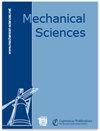步态分析算法在下肢康复机器人中的应用
IF 1.5
4区 工程技术
Q4 ENGINEERING, MECHANICAL
引用次数: 0
摘要
摘要下肢运动障碍患者在使用机器人进行康复训练时,步态参数对疾病诊断和康复评估具有重要意义。步态测量通常使用光学运动捕捉系统、压力板等进行。然而,由于这些系统的价格高、范围有限和要求苛刻,很难将其应用于下肢康复机器人。同时,目前机器人的大多数应用都集中在机器人控制或用户意图识别的基本步态参数(如步长和步长)上。因此,本文提出了一种基于激光雷达传感器作为步态数据采集传感器的下肢康复机器人步态在线分析算法。该装置安装在下肢康复机器人上,不仅避免了激光雷达在地面上放置导致检测精度下降和腿部跟踪失败的问题,而且实时计算出步长、步长、步态周期和站立时间等7个步态参数,精度高。同时,患者的行走轨迹可能不直,当患者向前移动时,由于下肢康复机器人的移动,也会改变dar坐标系。为了克服这种情况,提出了一种基于时间序列的空间参数拼接算法,有效地减少了误差对步态时空参数的影响。实验结果表明,本文提出的步态分析算法能够有效、准确地测量步态参数。除了摆动时间和双支撑时间由于其值较小而计算出较大的相对误差外,其余步态参数的相对误差保持在8以下 %, 满足临床应用的要求。本文章由计算机程序翻译,如有差异,请以英文原文为准。
Gait analysis algorithm for lower limb rehabilitation robot applications
Abstract. When patients with lower limb dyskinesia use robots for
rehabilitation training, gait parameters are of great significance for
disease diagnosis and rehabilitation evaluation. Gait measurement is usually
carried out by using optical motion capture systems, pressure plates and so
on. However, it is difficult to apply these systems to lower limb
rehabilitation robots due to their high price, limited scope and wearing
requirements. At the same time, most of the current applications in robots
focus on the basic gait parameters (such as step length and step speed) for
robot control or user intention recognition. Therefore, this paper proposes
an online gait analysis algorithm for lower limb rehabilitation robots,
which uses a lidar sensor as the gait data
acquisition sensor. The device is installed on the lower limb rehabilitation robot, which not only avoids the problems of decline in the detection
accuracy and failure of leg tracking caused by lidar placement on the
ground, but it also calculates seven gait parameters, such as step length, stride length, gait cycle and stance time, with high precision in real time. At the
same time, the walking track of the patient may not be straight, and the
lidar coordinate system is also changed due to the movement of the lower
limb rehabilitation robot when the patient moves forward. In order to
overcome this situation, a spatial parameter-splicing algorithm based on
a time series is proposed to effectively reduce the error impact on gait
spatiotemporal parameters. The experimental results show that the gait
analysis algorithm proposed in this paper can measure the gait parameters
effectively and accurately. Except for the swing time and double support
time, which are calculated with large relative errors due to their small
values, the relative errors of the remaining gait parameters are kept below
8 %, meeting the requirements of clinical applications.
求助全文
通过发布文献求助,成功后即可免费获取论文全文。
去求助
来源期刊

Mechanical Sciences
ENGINEERING, MECHANICAL-
CiteScore
2.20
自引率
7.10%
发文量
74
审稿时长
29 weeks
期刊介绍:
The journal Mechanical Sciences (MS) is an international forum for the dissemination of original contributions in the field of theoretical and applied mechanics. Its main ambition is to provide a platform for young researchers to build up a portfolio of high-quality peer-reviewed journal articles. To this end we employ an open-access publication model with moderate page charges, aiming for fast publication and great citation opportunities. A large board of reputable editors makes this possible. The journal will also publish special issues dealing with the current state of the art and future research directions in mechanical sciences. While in-depth research articles are preferred, review articles and short communications will also be considered. We intend and believe to provide a means of publication which complements established journals in the field.
 求助内容:
求助内容: 应助结果提醒方式:
应助结果提醒方式:


